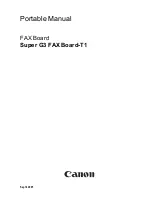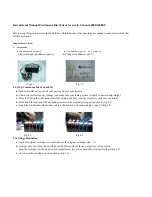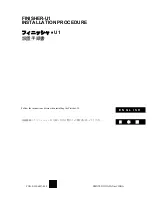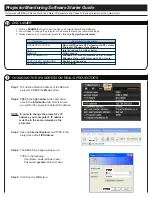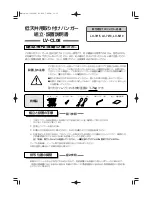
continued from preceding page
stalling the proportioning valve. Re-bleed the proportion-
ing valve, as well as all brakes (and any components
connected to the braking system) downstream from the
brake tee.
Symptom
The BrakeMaster air cylinder will extend and depress
the towed vehicle’s brake pedal. However, it will not retract
when the motorhome brake pedal is released.
Solution
1.
One of the air lines may be damaged or kinked. Follow
the air lines from the motorhome back to the air cylinder
in the towed vehicle. Inspect the entire line for deformities
caused by excessive heat and/or kinks in the line, which
would restrict the air flow — replace the entire section if
any are found.
2.
Make certain that the air cylinder has been installed
directly in line with the brake pedal. If it is mounted at an
angle to the brake pedal (to one side or the other), the
air cylinder may jam in the extended position.
3.
Dirt or debris can enter the air lines if the weather
covers are not used over the quick couplers. It may ac-
cumulate at the quick exhaust valve on the air cylinder,
preventing the valve from venting air out of the air cylinder.
Disassemble the quick exhaust valve and make certain it
is not jammed.
4.
If a system of diodes was used to wire the towed ve-
hicle’s lights for towing, make certain that a diode is in-
stalled at every point where the motorhome brake light
wire connects to the towed vehicle’s brake light wire.
When the air cylinder extends and depresses the towed
vehicle’s brake pedal, it energizes the towed vehicle’s
brake light wire. If diodes are not installed in the circuit,
current will travel back to the motorhome and activate the
BrakeMaster solenoid.
As long as the solenoid is activated, it will not allow air
to vent from the air cylinder — the air cylinder will remain
extended.
Symptom
The towed vehicle brakes abruptly the first time Brake-
Master is activated, ‘flat-spotting’ the tires. Also, after
towing, there may be excessive brake dust on the wheels
of the towed vehicle, and/or an unusual odor near the
towed vehicle’s brakes.
Solution
1.
The stored vacuum in the towed vehicle’s power brake
system
must
be depleted before towing — pump the brake
pedal several times. Depending on the make and model
of the towed vehicle, it may be necessary to pump the
brake pedal repeatedly.
Deplete the vacuum in the power brakes every time
the towed vehicle’s engine has been started — typically,
when the vehicle is connected for towing.
The engines in some vehicles, such as the Saturn Vue,
must be started periodically during towing. If the towed
vehicle’s engine must be started periodically, always de-
Troubleshooting — BrakeMaster 9060
plete the vacuum in the vehicle’s power brake system
before
you resume towing.
2.
If the towed vehicle has a full-time (‘active’) power
braking system, install the optional Brake Pressure Re-
ducer (part number 900002) to adapt the vehicle to the
BrakeMaster system.
Vehicles with ‘active’ brake systems include several
hybrid vehicles, such as some models of the Ford Escape
hybrid and the Mercury Mariner hybrid, as well as the H3
Hummer. These vehicles, and others with ‘active’ braking
systems, are designed so that even when the ignition is
turned to the ‘tow’ position, the braking system is still
active.
If the Brake Pressure Reducer is not installed, Brake-
Master will apply excessive force to the towed vehicle’s
brake pedal.
3.
If the towed vehicle does not have power brakes, in-
stall the optional Brake Pressure Reducer (part number
900002) to adapt the vehicle to the BrakeMaster sys-
tem.
BrakeMaster is designed to work with vehicles that
have a power brake system (even though the power
brakes are not activated while towing).
If the reducer is not installed, BrakeMaster will apply
excessive force to the towed vehicle’s brake pedal.
12
Содержание BrakeMaster 9060
Страница 1: ......



















